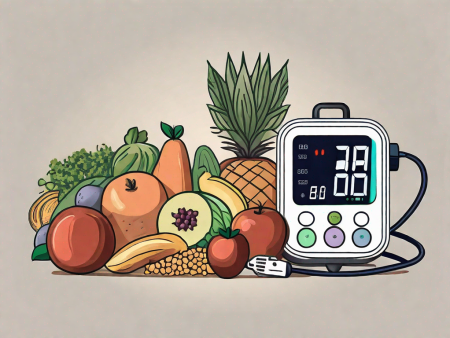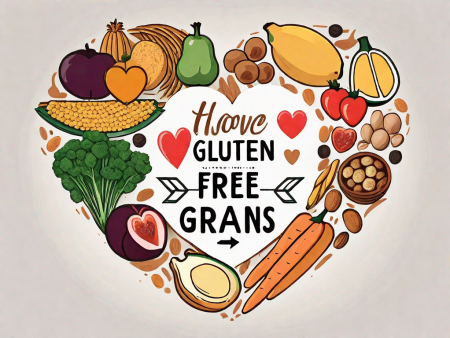Discover the fascinating journey of muscle mass transformation over time.
Exploring How Muscle Mass Changes Over Time
Muscle mass, the pillar of strength and power that keeps us moving, is a fascinating subject. It is not only essential for physical performance but also plays a crucial role in overall health. In this article, we will embark on a journey to understand how muscle mass changes over time, exploring its composition, life cycle, factors influencing its changes, and the health implications of these changes. So, let’s dive in!
Understanding Muscle Mass: An Overview
Before we unravel the mysteries of muscle mass changes, let’s grasp a basic understanding of what muscle mass actually is. Muscle mass refers to the amount of muscle tissue present in our body. It is composed of muscle fibers, connective tissue, blood vessels, and nerves, working synergistically to produce movement. Quite a complex system, right?
But there’s so much more to muscle mass than meets the eye. Let’s dive deeper into the fascinating world of muscle composition and its role in our bodies.

The Composition of Muscle Mass
Now, let’s take a microscopic journey into the composition of muscle mass. Delving deep into the muscle tissue, we find two types of muscle fibers: slow-twitch (Type I) and fast-twitch (Type II) fibers. The slow-twitch fibers are responsible for endurance activities like marathons, allowing us to keep going for long periods without fatigue. On the other hand, the fast-twitch fibers are all about explosive power and quick movements, enabling us to sprint, jump, and lift heavy weights.
But muscle mass is not just about fibers. It also includes connective tissue, such as tendons and ligaments, which provide stability and support. These tough and flexible structures anchor our muscles to bones and allow them to transmit force, ensuring smooth and coordinated movements. Without them, our muscles would be like loose strings, unable to generate the power needed for physical activities.
And let’s not forget about the vital role of blood vessels and nerves in muscle mass. Blood vessels, including arteries and veins, course through our muscles, delivering oxygen and nutrients while removing waste products. This intricate network ensures that our muscles receive the fuel they need to function optimally. Meanwhile, nerves send signals from our brain and spinal cord to our muscles, commanding them to contract and relax. Without these electrical impulses, our muscles would be dormant, unable to fulfill their purpose.
The Role of Muscle Mass in the Body
Now that we understand what muscle mass is made of, let’s delve into its role in the body. The primary function of muscle mass is to provide movement and support for our skeletal system. It allows us to walk, run, dance, and conquer the world with our physical prowess. Every step we take, every jump we make, and every punch we throw is powered by the strength and coordination of our muscles.
But muscle mass is not just about movement. It also plays a crucial role in our metabolism. Muscle tissue is metabolically active, meaning it requires energy even when we’re at rest. So, the more muscle mass we have, the higher our resting metabolic rate, helping us burn calories even while binge-watching our favorite shows (yes, you can still have your popcorn!). It’s like having a built-in calorie-burning machine that keeps working for us, even when we’re not actively exercising.
Furthermore, muscle mass contributes to our overall physical well-being. It improves our body composition by reducing body fat and increasing lean muscle mass. This not only enhances our appearance but also promotes better health. Having a higher proportion of muscle mass has been linked to improved insulin sensitivity, better cardiovascular health, and reduced risk of chronic diseases such as diabetes and obesity.
So, next time you flex your muscles or feel the burn after a tough workout, remember the intricate composition and incredible role of muscle mass in your body. It’s not just about looking strong; it’s about being strong, healthy, and capable of achieving amazing feats.
The Life Cycle of Muscle Mass
Now that we grasp the basics, let’s explore how muscle mass changes throughout different stages of life. Brace yourselves for a tour through childhood and adolescence, adulthood, and the golden years of the elderly.
Muscle Mass in Childhood and Adolescence
Ah, the glory days of youth! During childhood and adolescence, our bodies experience remarkable growth. This growth spurt also extends to muscle mass. With each leap, jump, and cartwheel, our muscles grow stronger and more developed.
Engaging in physical activities and sports during this period helps shape our muscle mass. It’s the perfect time to discover your favorite sports and embrace your inner athlete! So, get out there, play, and let your muscles bask in the joy of movement.
Whether it’s running around the playground, participating in team sports, or even trying out gymnastics or martial arts, the opportunities for physical activity are endless. Not only does this help build muscle mass, but it also promotes overall health and well-being. So, don’t be afraid to get active and have fun!
Muscle Mass in Adulthood
Welcome to the realm of adulthood, where responsibilities and muscle mass changes await. As we enter the adult phase, muscle mass tends to stabilize. However, this doesn’t mean we should bid farewell to our active lifestyle.
In fact, maintaining muscle mass becomes crucial at this stage. Regular exercise, including resistance training and aerobic activities, helps preserve and promote muscle mass. So, don’t forget to make time for those gym sessions or a fun dance class. Your muscles will thank you!
As we navigate the demands of work, family, and other commitments, it can be challenging to find time for exercise. But remember, even small bursts of physical activity can make a difference. Whether it’s taking the stairs instead of the elevator, going for a brisk walk during lunch breaks, or incorporating short workout routines into your daily routine, every bit counts.
Additionally, maintaining a balanced diet is essential for supporting muscle mass. Adequate protein intake, along with a variety of fruits, vegetables, whole grains, and healthy fats, provides the necessary nutrients for muscle growth and repair. So, fuel your body with wholesome foods to optimize your muscle mass and overall health.
Muscle Mass in the Elderly
Now, let’s venture into the golden years. As we age, muscle mass undergoes changes that can impact our strength and functionality. Sarcopenia, the age-related loss of muscle mass, becomes more prevalent.
But fear not! Regular exercise and a balanced diet can alleviate these changes. Resistance training, such as lifting weights or using resistance bands, helps combat muscle loss and maintain strength. It’s never too late to put on those workout shoes and enjoy the benefits of a strong body.
In addition to resistance training, activities that improve balance and flexibility, such as yoga or tai chi, can also be beneficial for the elderly. These exercises help prevent falls and maintain mobility, allowing for a more independent and active lifestyle.
Furthermore, proper nutrition plays a crucial role in preserving muscle mass in older adults. Adequate protein intake, along with sufficient vitamins and minerals, supports muscle health and overall well-being. So, make sure to include lean sources of protein, such as poultry, fish, legumes, and dairy products, in your meals.
As we age, it’s important to listen to our bodies and make adjustments to our exercise routines as needed. Consulting with a healthcare professional or a certified trainer can provide personalized guidance and ensure that we engage in activities that are safe and suitable for our individual needs.
Remember, the journey of maintaining muscle mass is a lifelong one. By staying active, eating well, and adapting our exercise routines to each stage of life, we can continue to enjoy the benefits of strong and healthy muscles. So, let’s embrace the challenges and opportunities that each phase brings and keep our muscles strong and thriving!
Factors Influencing Muscle Mass Changes
Now that we’ve explored the life cycle of muscle mass, let’s investigate the factors influencing its changes. Brace yourself for a feast of nutrition, exercise, and hormones.

The Impact of Nutrition on Muscle Mass
Ah, the power of food! What we eat plays a pivotal role in muscle mass changes. Consuming adequate protein is essential for muscle growth and repair. So, load up your plate with protein-rich goodness like lean meats, fish, eggs, and plant-based protein sources.
But let’s not neglect the other nutrients. Vitamins, minerals, and carbohydrates all contribute to muscle health and overall well-being. Remember, a balanced diet is the secret sauce to fuel your muscles for greatness.
The Role of Exercise in Muscle Mass Maintenance
Time to break a sweat! Exercise is a crucial player in the maintenance and growth of muscle mass. Regular physical activity, including both resistance training and cardio exercises, helps stimulate muscle growth.
Resistance training, such as weightlifting or bodyweight exercises, creates micro-tears in the muscle fibers. As these tears heal, muscle mass increases, making us stronger and more powerful. It’s like a superhero transformation, but without the cape!
The Effect of Hormones on Muscle Mass
Our bodies are quite the chemistry labs, and hormones are the magical sparks that influence muscle mass changes. Testosterone, the hormone often associated with masculinity, plays a vital role in muscle growth. Higher testosterone levels promote muscle development, making it a key player in achieving those gains.
However, it’s not just about testosterone. Growth hormone and insulin-like growth factor-1 (IGF-1) also contribute to muscle mass changes. That’s why proper hormonal balance is crucial for maintaining healthy muscle mass.
The Health Implications of Muscle Mass Changes
Finally, let’s explore the bounty of health implications that muscle mass changes bring. Prepare to be amazed by the wonders of metabolism, bone health, and cardiovascular well-being.
The Relationship Between Muscle Mass and Metabolism
Remember how we mentioned earlier that muscle mass is metabolically active? Well, here’s where the magic happens. Increased muscle mass boosts our metabolism, helping us burn more calories throughout the day, even at rest.
So, while you work on building those muscles, they work right back for you, being the ultimate calorie-burning machines. Now, that’s a win-win situation!
Muscle Mass and Bone Health
Who knew muscles could be BFFs with bones? Well, they are! Maintaining adequate muscle mass plays a vital role in supporting bone health. As muscles contract, they exert force on the bones, stimulating bone density and strength.
So, keep those muscles active and strong to provide the best support system for your bones. Say goodbye to brittle bones and hello to a sturdy framework that keeps you going!
Muscle Mass and Cardiovascular Health
Our heart dances with joy as we discuss the relationship between muscle mass and cardiovascular health. Regular exercise that promotes muscle mass also benefits our heart and blood vessels.
A healthy cardiovascular system ensures efficient delivery of oxygen and nutrients to our muscles and organs. So, embrace your inner fitness guru, and let your heart rejoice in the dance of life!
Wrap Up
There you have it, the whirlwind tour of muscle mass changes over time. From understanding its composition to exploring the life cycle and factors influencing its changes, we’ve covered it all. Let’s not forget the incredible health implications that muscle mass brings, impacting our metabolism, bone health, and cardiovascular well-being.
So, let’s embrace the power of muscle mass, keeping our bodies strong, healthy, and unstoppable. As we age, let’s remember that we are the masters of our muscles, shaping them through exercise, nourishing them with proper nutrition, and celebrating their incredible ability to adapt and change. Here’s to a lifetime of muscle mass mayhem!







I am genuinely amazed with your profound understanding and superb way of expressing complex ideas. The knowledge you share clearly stands out in every piece you write. It’s clear that you spend considerable time into delving into your topics, and the results does not go unnoticed. We appreciate your efforts in sharing such detailed information. Continue the excellent job! https://rochellemaize.com
I’m truly impressed with your profound understanding and superb writing style. Your expertise shines through in every sentence. It’s obvious that you invest a great deal of effort into researching your topics, and this effort is well-appreciated. Thanks for providing such valuable insights. Keep up the great work! https://www.elevenviral.com
Thank you for your sharing. I am worried that I lack creative ideas. It is your article that makes me full of hope. Thank you. But, I have a question, can you help me?